Great Design Plant: Silphium Perfoliatum Pleases Wildlife
Cup plant (Silphium perfoliatum) is not for the faint of heart, especially gardeners who usually shy away from large plants. But use its size to your advantage. What perennial native plant grows to a height of 10 feet or more in as little as two months? Plant this giant next to your deck for privacy from your neighbors, and enjoy watching the pollinators stop by for nectar and pollen; birds and other insects will come for the water that is held in the large, clasping leaves.
This native plant can also be planted as an herbaceous hedge. Screen unsightly garden features, try it in a large perennial garden as a backdrop or make a statement and site it in the middle of a large, circular bed. Moist sites, such as drainage ditches, pond edges or large rain gardens are other suitable locations for cup plant.
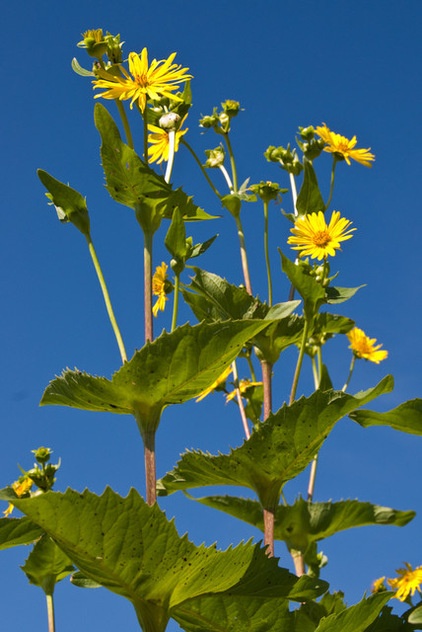
Botanical name: Silphium perfoliatum
Common name: Cup plant
Origin: Native to eastern North America, from North Dakota south to Oklahoma and east to Georgia in the south and Maine in the north; also occurs in Canada, in Ontario and Quebec
Where it will grow: Hardy to -40 degrees Fahrenheit (USDA zones 3b to 8b; find your zone)
Typical plant communities: Wet prairies, meadows, savannas, wetland edges and thickets
Soil requirement: Mesic to wet sand to clay-loam soil
Light requirement: Full sun to partial sun
Mature size: 3 to 10 feet tall and 5 feet wide
Benefits and tolerances: Tolerates most soil types except dry, sandy soil
Seasonal interest: Large, bright yellow flowers in midsummer; large, coarse leaves and shrub-like dense structure in general
When to plant: Spring or fall
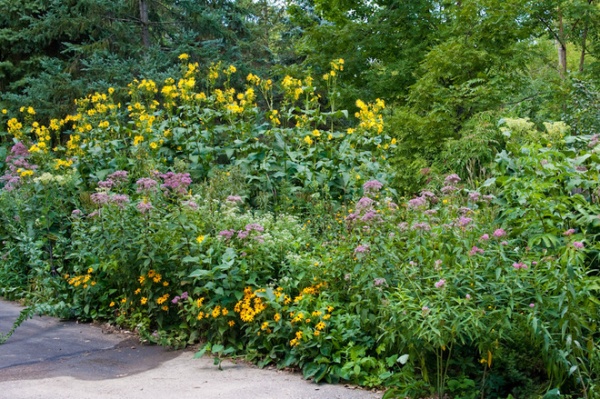
Shown: Cup plant used in a native perennial planting as a backdrop
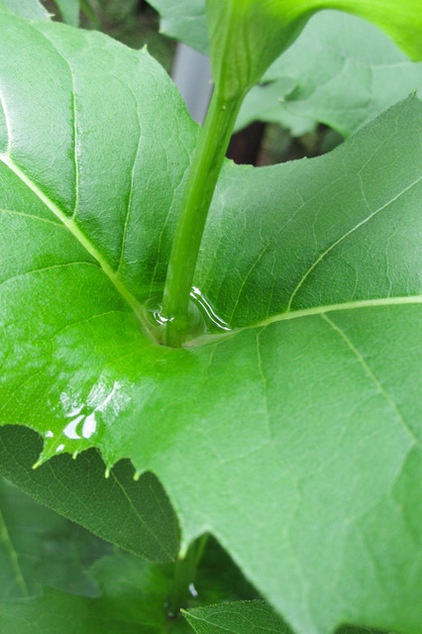
Distinguishing traits. Cup plant features an upright, sturdy form with dark green leaves and showy, bright yellow flowers. The extremely large leaves clasp a square flower stalk, creating a reservoir that holds water after a rainfall. The flowers attract many types of pollinators, including bees and butterflies. The seeds are sought after by birds.
How to use it. Cup plant can get enormous, especially in soil rich with organic matter. It is not a suitable plant for a small garden or a space where it could overpower smaller, more delicate perennials. Therefore, use cup plant in large perennial borders as a backdrop, as a central focal point in a circular bed or as an herbaceous hedge.
Shown: Cup plant leaves holding water
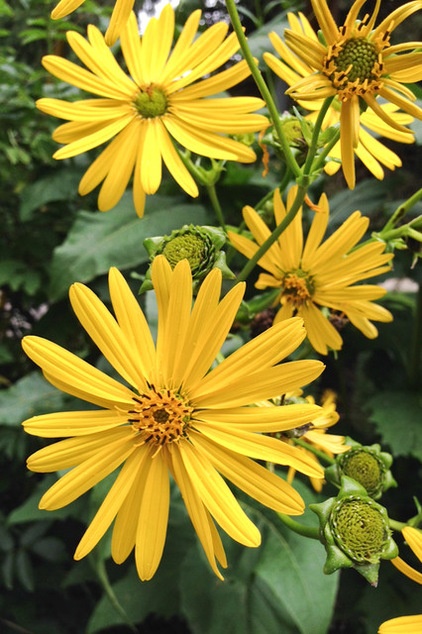
Planting notes. Allow ample spacing (space the plants at least 2½ feet on center). Cup plant will reseed in most sites where it is planted. If this is a concern, dig seedlings out in the spring from unwanted areas. The fibrous-rooted seedlings are easy to dig up and transplant. If you want to prevent reseeding by removing the flower heads, remove the seeds and put them out for the birds. The sunflower-size seeds are an extremely important food source for birds, including gold finches and sparrows.
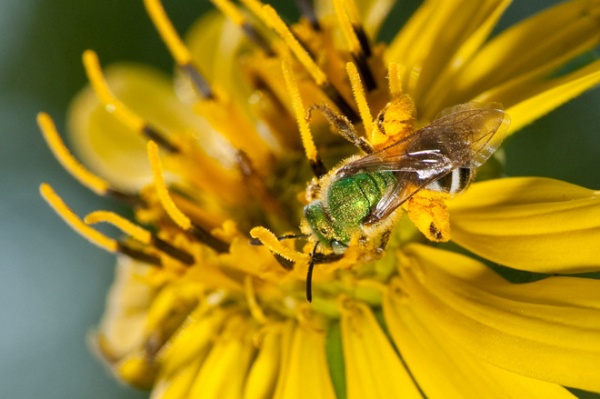
Pollinator notes. The open, flat composite flowers attract all types of insect pollinators, including bees, butterflies and moths. The outer ray florets are fertile and produce a ring of seeds; the inner disk florets are sterile. The flowers are protandrous, with the ray florets producing pollen first; pollen is picked up by hairs on the style as it elongates, presenting the pollen to pollinators.
Shown: Green sweat bee (Agapostemon sp)
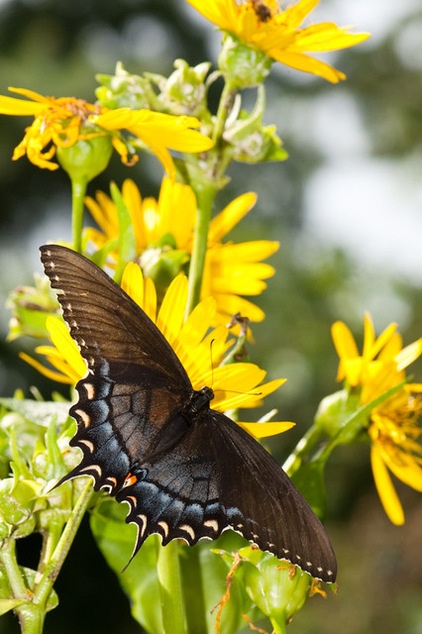
Cavity-nesting bees and solitary wasps use the stems as nesting sites. The large, square stems are hollow between the nodes and can be bundled together (10 inches in length, 4-inch-diameter bundles) and hung in a sunny location that receives morning sun. Choose stems from eye level; the lower stems are often too big in diameter.
Other pollinators visit the water held in the clasping leaves. Look for both social and solitary wasps drinking water from this shallow reservoir. Birds also regularly visit for water, and later for seeds. Small birds use the bushy, dense foliage for cover and occasional nesting sites.
Shown: Eastern tiger swallowtail, black morph (Papilio glaucus)
More: How to Design a Garden for Native Bees












